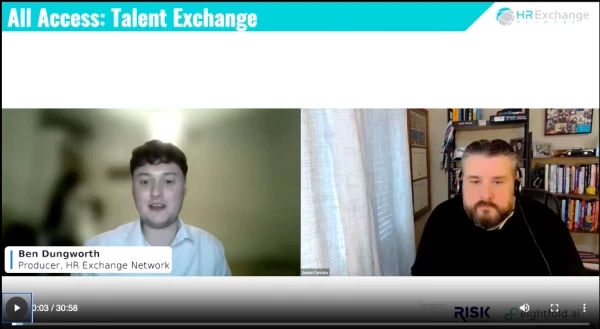Best Practices for Developing Your Employer Brand
Add bookmark
Your employer brand is more important than ever. As a record number of Americans quit their jobs in 2021, they caused a historic labor shortage and consequential talent war. To get an edge on your competitors, you need a reputation for being a supportive, empathetic, and smart employer. So, Human Resources leaders are going the way of traditional advertisers. They’re thinking of employees (past, present, and future) as customers and branding themselves as they would a product.
WATCH: HR Exchange Network Live: Recruiting and Talent Acquisition
What Is Employer Branding?
This refers to the process of determining what your organization is all about and how you want others to perceive you.
"An employer brand is an important part of the employee value proposition (EVP) and is essentially what the organization communicates as its identity to both potential and current employees," according to SHRM. "It encompasses an organization’s mission, values, culture, and personality."
If you ignore the process of employer branding, you create a vacuum and someone else will step in to create your reputation. Look at Glassdoor reviews and social media posts about what it's like to work at your company. You don't want the message to be coming from a disgruntled employee. You want to be the messenger. After all, your employer brand should be a driving force for your company.
"Just like your external brand, it's a thread that runs through everything. It motivates people day-to-day. It puts different teams on the same page. It helps you find new hires who will add to the culture of your organization, and gives recruiters a way to sell you to the very best candidates," Sam Pollen, creative director at Reed Words, a global branding agency, writes in Fast Company. "And it turns ex-employees into alumni: people who always carry a piece of your organization with them."
Find out best practices for HR leaders delving into building a strong employer brand:
Do Some Navel Gazing
Think about your mission and values, and ask yourself some key questions:
- Why are you here?
- What is the purpose of your business?
- What kinds of values do you want associated with the work environment and opportunities offered to employees?
- What kinds of people do you want to work for you?
- Who would you like to attract next?
Pollen suggests talking to your “customers” or “employees” to learn why they chose to work for you over competitors. He says to also ask the question in a different way: “Why do you want other people to choose to work for this organization?”
WATCH: Beyond the Great Resignation: An Action Plan for Hiring and Retention
Determine EVP
Similar to employer branding, the employee value proposition is a tool for marketing your organization to potential hires. It refers to the specific reasons someone might want to work for you. Gartner recently released a report about reinventing your EVP in the wake of all the changes brought on by the pandemic.
“The postpandemic workplace requires a value proposition based on new management principles,” according to Gartner.
In the report, you will learn about The Human Deal, a new way of developing EVP, which includes:
- Helping employees connect to family and community
- Offering flexibility about where, when, how much, how, and with whom employees work
- Providing opportunities for both personal and professional growth
- Taking action on social and cultural issues
- Considering Your Presence on Social Media
Providing opportunities for deeper connections and offering “radical flexibility” had the most impact, according to the report. There was a 28% increase in employees who were highly likely to recommend the organization because of the deeper connections, and an 18% increase in high performers by providing more flexibility.
Obviously, EVP is unique to each organization. You can, however, reshape your EVP, and these suggestions are in line with what recruits and employees have been demanding over the course of the pandemic.
READ: How HR Can Stop Workplace Bullies
Invest in Improving Company Culture
Bad bosses go viral. Flying staplers and Zoom layoffs get plastered all over social media. Those kinds of headlines haunt HR as they try to manage recruitment and retention. The better path is to work on creating a culture that is positive and pleasant for workers and management alike.
"On the surface, it may not seem like revamping a company’s culture can help its bottom line," according to Forbes. "However, many companies have found the opposite to be true, with investments in culture paying off in both the short- and long-term."
CHROs need to get support from C-suite executives because they set the tone for the culture of a place. Policies and enforcement should reflect zero tolerance for bad behaviors that infect the workplace but also cause PR nightmares. And there should be rewards for positive behavior.
READ: Q&A: A Modern Approach to Recruiting and Talent Acquisition
Be Active on Social Media
Social media is the place for employers to interact with potential hires. In fact, 59% of candidates use social media to research jobs, according to the Muse.
"Your employer brand is nothing without marketing," according to the Muse article. "If you don’t actively promote those attributes that make your company an amazing place to work, then they’re really just ideas—because no one will actually know about them."
Many in HR are offering a window into life at their workplaces. They share videos about people who work at the company. They might offer up photos that demonstrate their culture like a volunteer day or the internship class. Most importantly, they create a dialogue with those who are interested in working with them. Social media platforms like LinkedIn are the place to set the tone for your employer brand. It’s your chance to write your story rather than letting others do it for you.
Photo by fauxelsforPexels






















